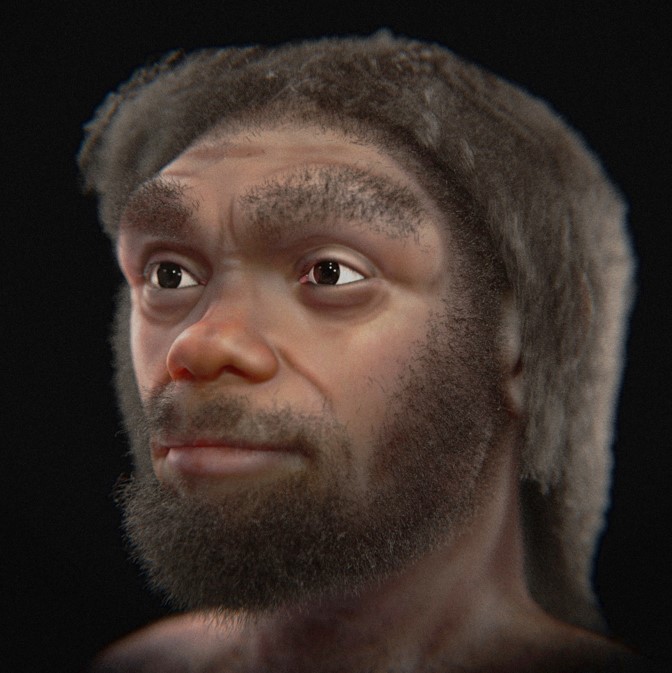Around 150,000 years ago, an enormous, fat-headed human species known as Homo longi (or “Dragon Man”) roamed the frosty forests of northern China. Despite its grotesque proportions, the ancient hominid has recently been identified as a sister lineage of Homo sapiens, and a new reconstruction of the extinct human’s face reveals what it might have looked like.
Named after the Heilong Jiang River (meaning Black Dragon River) in China’s Harbin province, Homo longi first entered the archaeological record in 1933 when construction workers uncovered an exquisitely preserved skull while building a bridge. It wasn’t until 2021, however, that researchers realized that the cranium belonged to a previously unknown species.
Dated to at least 146,000 years ago, the skull’s owner occupied East Asia at a time when modern humans rubbed shoulders (and other body parts) with several of our close evolutionary relatives, including Neanderthals and Denisovans. Described as being “huge in size” and possessing a number of unique facial features such as square eye sockets, flat and low cheekbones, and enormous teeth, Homo longi would, at first glance, appear to be a somewhat distant relation of its three contemporary hominids.
Homo longi had the largest skull of any known hominid.
Image credit: Cicero Moraes
However, researchers believe that Dragon Man may in fact be more closely related to modern humans than even our most celebrated sisters, the Neanderthals. Until now, though, we’d never had a good look at the face of this chunky sibling of ours.
To represent the ancient hominid’s likeness, Brazilian expert Cícero Moraes (whose other facial reconstructions include “Hobbit” humans and Ancient Egyptian pharaohs) created a digital model of the skull using data and images provided by the authors of the 2021 study. The complete skull of another ancient human – Homo erectus – was then incorporated in order to fill in missing fragments of the Homo longi jaw and some of the teeth.
The black and white digital bust of Homo longi, before the “artistic” addition of hair and skin color.
Image credit: Cicero Moraes
Next, Moraes added soft tissue markers by taking computerized tomography scans of modern humans and chimpanzees, and warping these to fit the contours of the Homo longi skull. This resulted in the creation of an “anatomically coherent” grayscale digital bust, based on objective data and reliable modeling techniques.
However, because the resulting images are intended to be presented to the general public, Moraes gave himself permission to use an “artistic approach” when adding hair and coloration to the model, thus bringing out the more “vivid aspects” of Dragon Man’s appearance.
Based on the final model, Moraes calculated that Homo longi had a head circumference of 65.1 centimeters (25.6 inches). This measurement gives Dragon Man the distinction of having by far the largest head of any known hominin, placing the extinct human’s bonce on par with gorillas and lions.
According to the experts who analyzed the skull a couple of years ago, the species’ massive size may reflect an adaptation to Harbin’s freezing temperatures, which today reach minus 16 degrees Celsius (3.2 degrees Fahrenheit) in winter.
The study detailing the facial reconstruction is posted to Ortog Online.
Source Link: This Is The Face Of "Dragon Man", Modern Humans' Closest Relative
